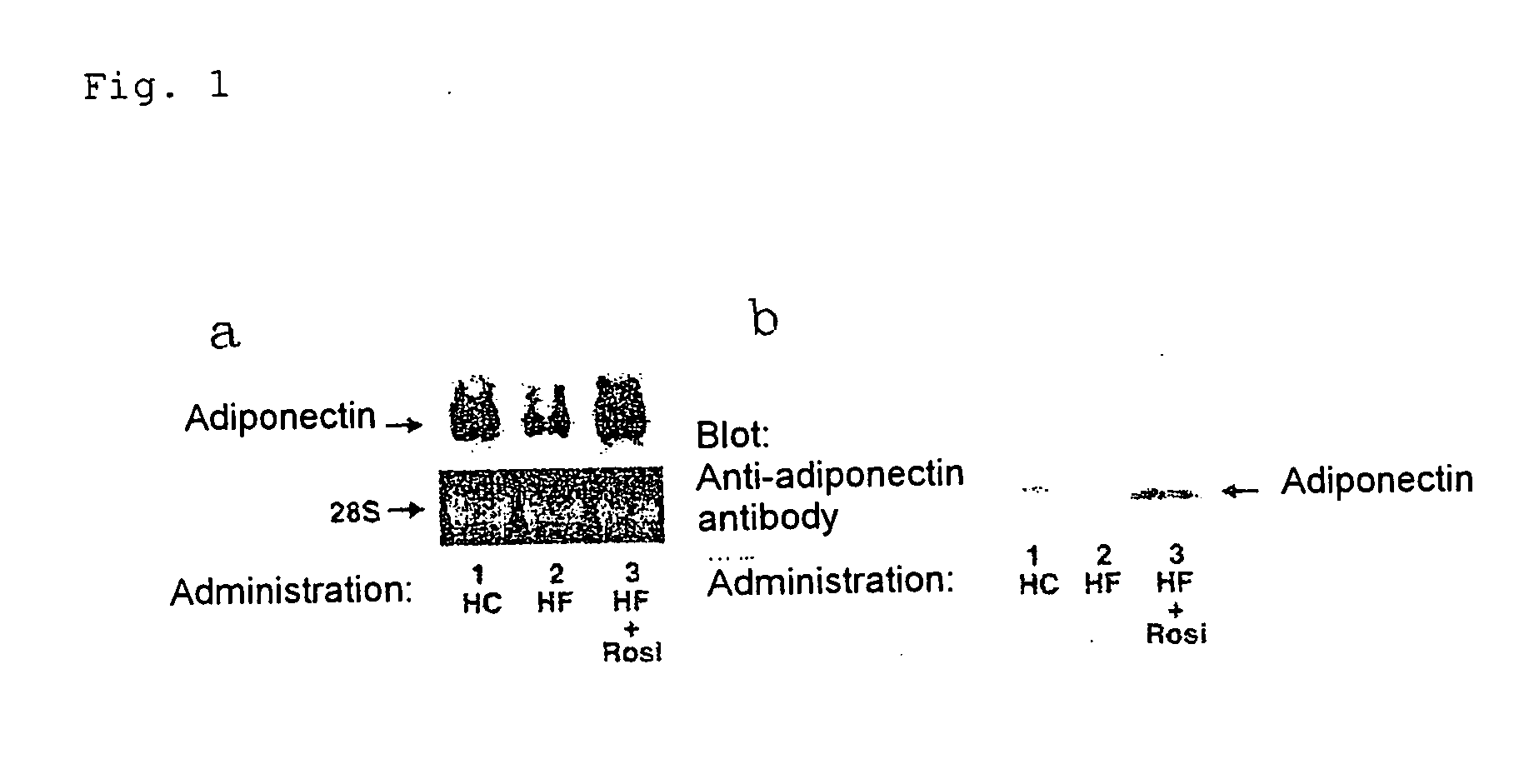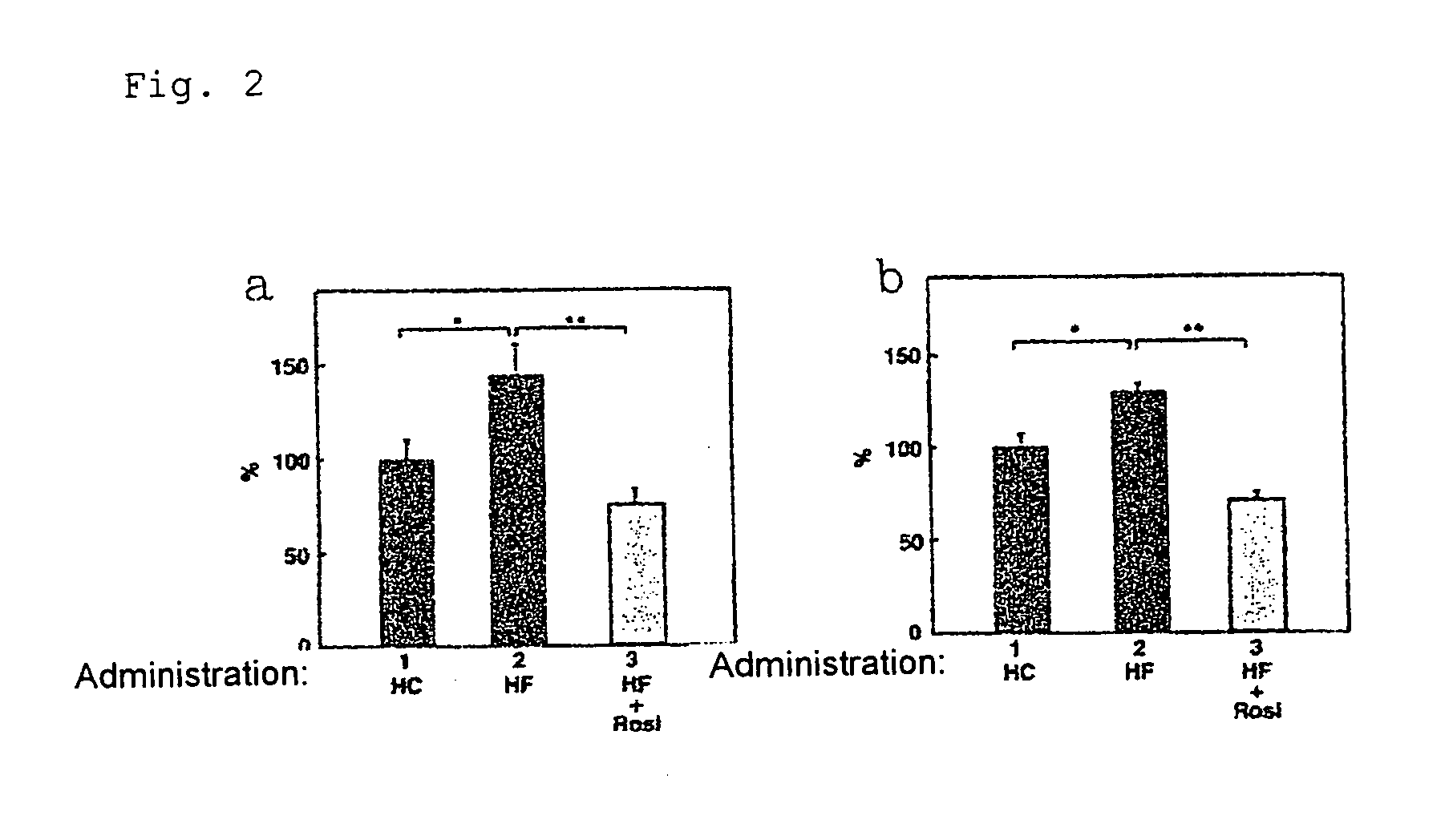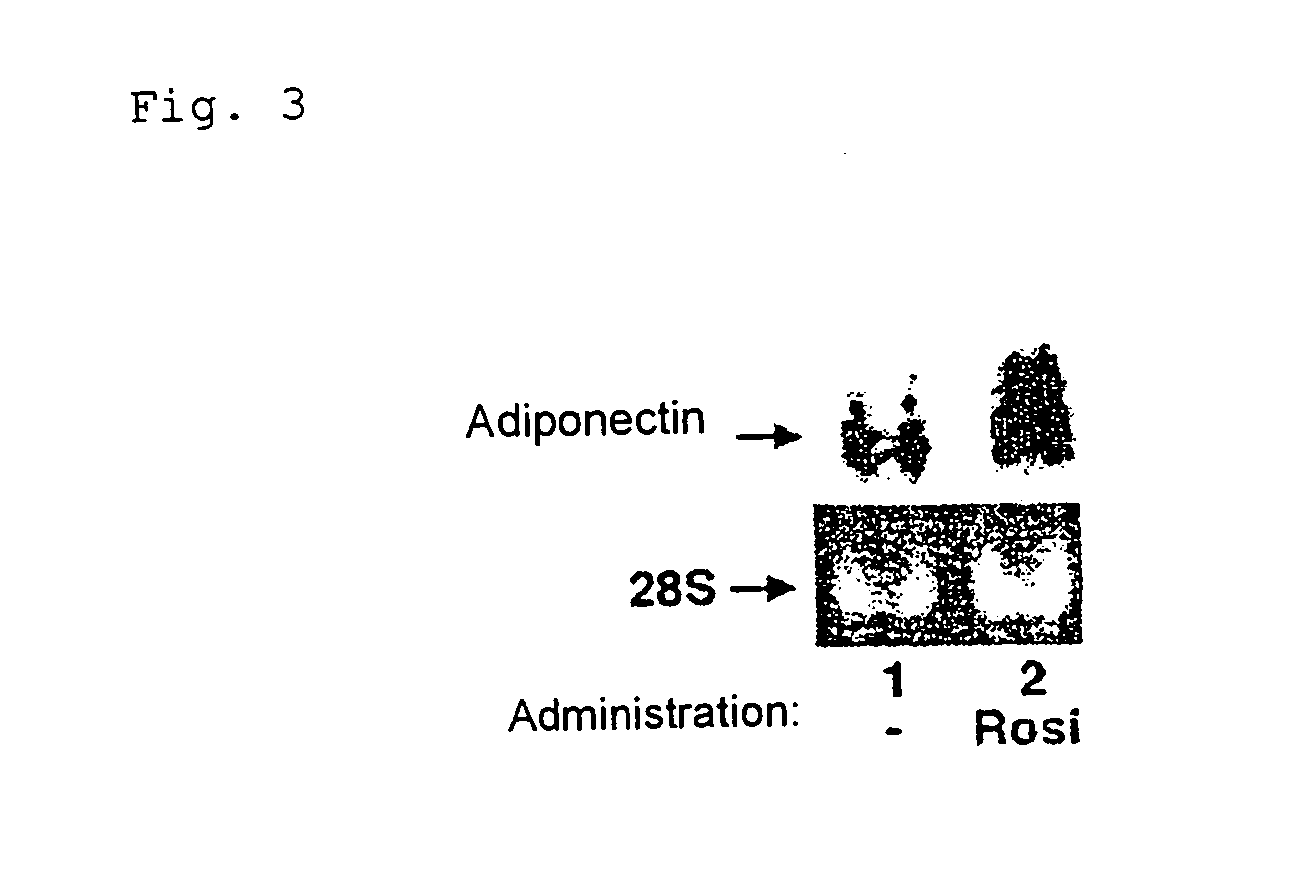Insulin resistance improving agent
a technology of improving agent and insulin, which is applied in the direction of peptide/protein ingredients, extracellular fluid disorder, metabolic disorder, etc., can solve the problem that adiponectin is not effective in the actual treatment of diabetes, and the effect of reducing expression or loss of expression
- Summary
- Abstract
- Description
- Claims
- Application Information
AI Technical Summary
Benefits of technology
Problems solved by technology
Method used
Image
Examples
examples
[0032] The present invention will next be described in more detail by way of Examples, which should not be construed as limiting the invention thereto.
A. Methods
(1) Chemicals
[0033] Rosiglitazone (PPAR-γ agonist) and HX531 (PPAR-γ / RXR inhibitor) were synthesized as described in the literature (Chem. Pharm. Bull. (Tokyo) 47, 1778-1786 (1999), Diabetes 47, 1841-1847 (1998)).
(2) Animals
[0034] PPAR-γ+ / − mice were prepared in a manner which had already been reported (Mol. Cell 4, 597-609 (1999)). All other animals were purchased from Nippon CREA. Six-week-old mice were fed powdered chow, and drugs were given as feed admixtures as described (Mol. Cell 4, 597-609 (1999)).
(3) RNA Preparation, Northern-Blot Analysis, and Immunoblotting
[0035] Total RNA was prepared from tissues through use of TRIzol (GIBCO-BRL) according to the manufacturer's instructions. RNA obtained from 5 to 10 mice in each group was pooled, and aliquots were subjected to northern blot analysis with the probes f...
PUM
| Property | Measurement | Unit |
|---|---|---|
| total volume | aaaaa | aaaaa |
| resistance | aaaaa | aaaaa |
| excess energy | aaaaa | aaaaa |
Abstract
Description
Claims
Application Information
 Login to View More
Login to View More - R&D
- Intellectual Property
- Life Sciences
- Materials
- Tech Scout
- Unparalleled Data Quality
- Higher Quality Content
- 60% Fewer Hallucinations
Browse by: Latest US Patents, China's latest patents, Technical Efficacy Thesaurus, Application Domain, Technology Topic, Popular Technical Reports.
© 2025 PatSnap. All rights reserved.Legal|Privacy policy|Modern Slavery Act Transparency Statement|Sitemap|About US| Contact US: help@patsnap.com



